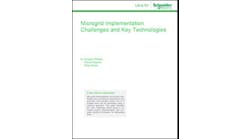Imagine a world where green, renewable sources are supplying most or all of the energy needed for every purpose: lighting, heating, processes, and transportation. Imagine that energy consumers are able to proactively choose which energy source they want to consume. Imagine an electricity supply that is completely reliable. Imagine a typical business or institution spends much less on their energy consumption, or actually generates revenue from it.
This scenario is becoming possible today with the marriage of new technologies and operational strategies on both sides of the electricity meter.
Over the past several decades, growing energy consumption, along with a combination of intermittent renewable energy generation, and severe weather events have contributed to electrical grid instability and energy price volatility. Electricity grid operators and utilities are taking steps to address these challenges in a variety of ways, including looking to the demand side for help.
As part of smart grid modernizations, remunerative programs are being launched or expanded that encourage energy consumers to adjust their consumption in response to pricing signals, penalties, or curtailment requests. Due to this potential flexibility, energy-consuming loads and any onsite energy generation capabilities are now considered important distributed energy resources (DER), critical to helping balance the grid.
At the same time, many energy consumers have begun taking more direct control of the cost, reliability, and green mix of their energy supply. Municipalities, campuses, military bases, hospitals, commercial buildings and factories are becoming proactive energy consumers. They are enabled on this journey by a convergence of four widely available technologies that can automate and fully monetize their energy resources:
1. Energy management systems
2. Onsite renewable energy production
3. Electrical energy storage systems
4. Intelligent, interactive connections to the smart grid
This paper explains how these technologies are contributing to the smart, new energy consumer paradigm. Armed with these tools, organizations and businesses are managing energy resources in a more dependable, economic, and environmentally sustainable way. Download this e-book from the Microgrid Knowledge White Paper Library.








